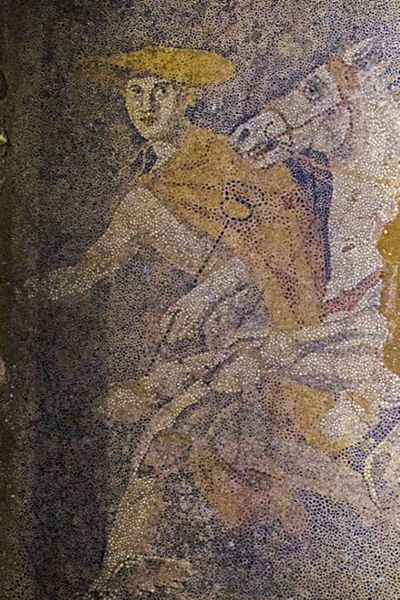Large mosaic discovered in ancient tomb in Greece

ATHENS, Greece – Archaeologists digging through a vast ancient tomb in Amphipolis in northern Greece have uncovered a floor mosaic that covers the whole area of a room seen as the antechamber to the main burial ground.
The mosaic, 10 feet long and 15 feet wide, depicts a horseman with a laurel wreath driving a chariot drawn by two horses and preceded by the god Hermes. According to a Culture Ministry announcement on Sunday, Hermes is depicted here as the conductor of souls to the afterlife.
The mosaic is made up of pebbles in many colors: white, black, gray, blue, red and yellow. A circular part, near the center of the mosaic, is missing, but authorities say enough fragments have been found to reconstruct a large part.
The ministry said archaeologists have dated the mosaic to the last quarter of 4th century B.C. (325-300 B.C.), consistent with their belief the grave contains the remains of a contemporary of Alexander the Great, the ancient Greek king of Macedonia, who conquered the Persian Empire and reached present-day India, Afghanistan and Uzbekistan in a whirlwind campaign, from 334 to 323 B.C. The grave may be that of a relative or general of Alexander’s, archaeologists have speculated.
Alexander himself, who died in Babylon in present-day Iraq at age 32, in 323 B.C., is believed to have been buried in Egypt, but his tomb hasn’t been found.